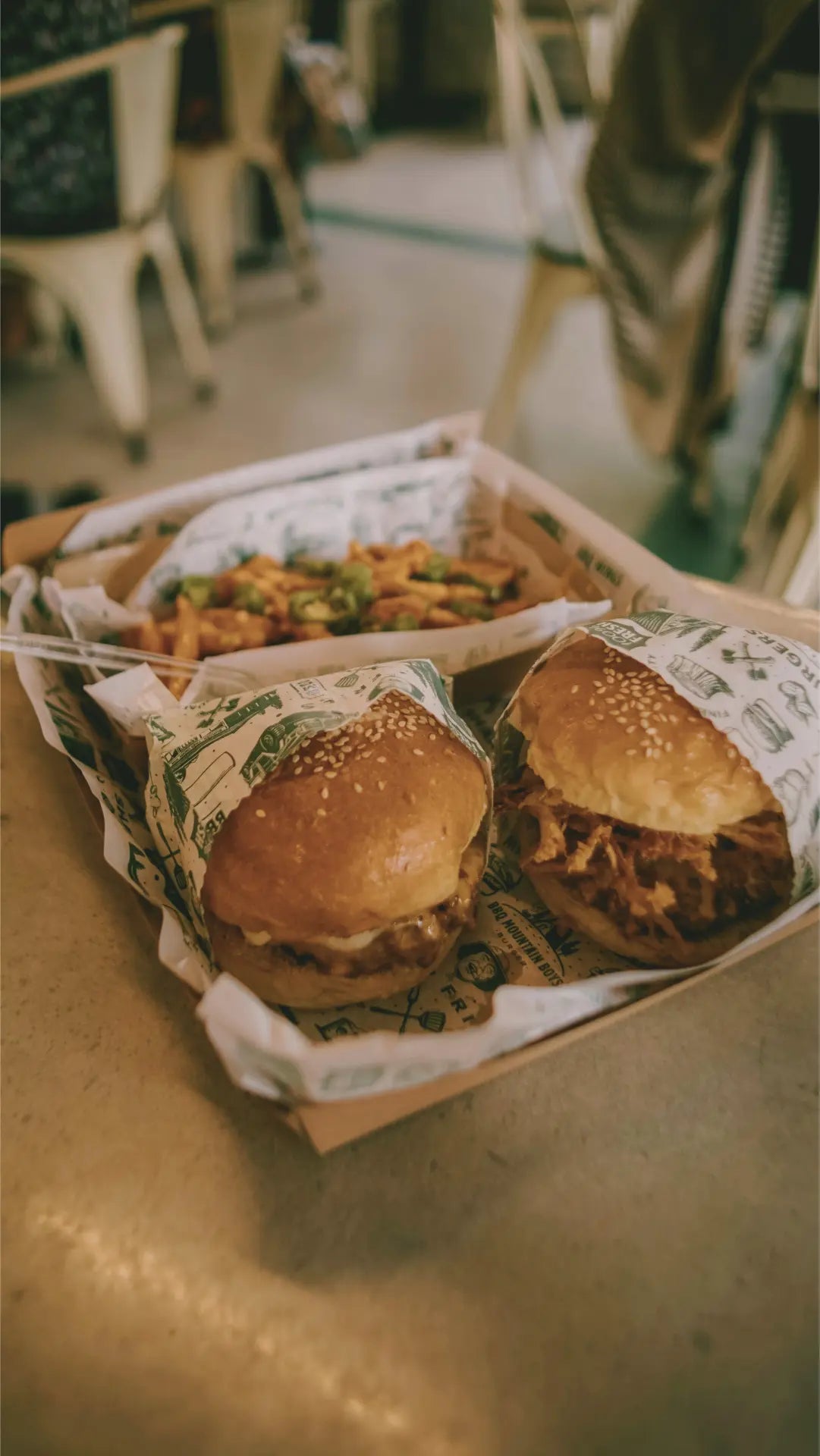
What is greaseproof paper?
Walk into any bakery, burger joint, or food truck, and you'll likely spot it – that slightly translucent paper that keeps your food fresh and your hands clean. But what exactly is greaseproof paper, and why has it become essential in food packaging?
The Basics
Greaseproof paper is a specialized paper treated to resist oil, grease, and moisture. Unlike regular paper that would quickly absorb and deteriorate when exposed to oily foods, greaseproof paper creates a barrier that keeps liquids from seeping through while maintaining the paper's integrity.
How It's Made
The magic happens during manufacturing. The paper pulp is beaten extensively, creating a dense fiber structure that naturally resists penetration by oils and fats. Some varieties undergo additional chemical treatments to enhance their grease-resistant properties, but the basic resistance comes from the tight weave of the paper fibers themselves.
Where You'll Find It
Food Service: Lining food baskets, wrapping sandwiches, separating baked goods, and protecting surfaces from greasy foods.
Retail Packaging: Wrapping deli items, protecting products in food packaging, and as an inner liner in boxes containing oily products.
Home Kitchens: Baking applications, food storage, and prep work where you need protection from grease and moisture.
Greaseproof vs. Parchment Paper
Here's where people get confused. While both resist grease, parchment paper is typically silicone-coated and designed for high-heat baking applications. Greaseproof paper focuses purely on grease resistance and is usually more affordable, making it perfect for cold and room-temperature food applications.
The Business Benefits
For food businesses, greaseproof paper solves practical problems while enhancing presentation. It keeps packaging clean, prevents oil stains that could damage other materials, and gives food an appetizing, professional appearance. Plus, it's much more cost-effective than plastic alternatives for many applications.
Environmental Considerations
Most greaseproof paper is recyclable and biodegradable, making it an eco-friendly choice compared to plastic-lined alternatives. When sourced responsibly, it offers businesses a way to package food sustainably without compromising functionality.
Choosing the Right Type
Greaseproof paper comes in different weights and levels of resistance. Light-duty versions work well for dry baked goods, while heavy-duty options can handle the greasiest foods. Consider your specific application – wrapping a donut requires different properties than lining a fish and chips basket.
The Bottom Line
Greaseproof paper might seem like a simple product, but it's solving real problems for food businesses every day. It keeps food fresh, packaging clean, and customers happy – all while being affordable and environmentally responsible.
Whether you're running a restaurant, bakery, or food truck, understanding greaseproof paper can help you make better packaging decisions that protect both your food and your brand image.
Looking for the right food packaging solutions? Greaseproof paper might be the simple, effective answer you've been searching for.

